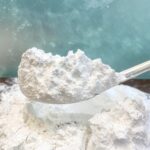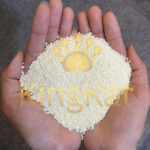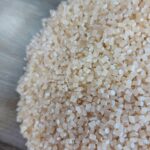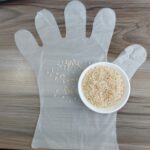CASHEW NUT SHELL OIL
Pudding, a beloved dessert worldwide, owes much of its creamy, smooth texture to the starches used in its production. Modified tapioca starch has become a game-changer for manufacturers looking to enhance product quality, consistency, and shelf stability. This versatile ingredient significantly transforms the texture of pudding, making it a critical tool in creating the perfect dessert. Here are five key ways modified tapioca starch revolutionizes pudding texture.


Table of Contents
Toggle1. Superior Thickening Ability
Compared to traditional starches like cornstarch or wheat starch, modified tapioca starch offers superior thickening power. Traditional starches often require higher cooking temperatures and longer preparation times to achieve the desired consistency, which increases the risk of clumping or overcooking. In contrast, modified tapioca starch thickens more efficiently at lower temperatures, resulting in a smoother and creamier texture.
This fast-acting thickening capability allows manufacturers to produce a variety of pudding textures, from light and airy mousse-like puddings to rich, dense custards. Additionally, it reduces cooking time, increasing production efficiency without compromising quality, and offers a consistent result batch after batch.
2. Enhanced Creaminess and Mouthfeel
Texture is everything when it comes to pudding, and modified tapioca starch excels in delivering an indulgent, creamy mouthfeel. Its molecular structure allows it to form a smooth gel that feels luxurious on the palate without any gritty or starchy aftertaste, often found with other starches. The fine and uniform starch particles create a velvety texture that mimics full-fat dairy products.
This smooth and creamy texture makes modified tapioca starch perfect for both premium pudding lines and low-fat or plant-based alternatives. It ensures that even healthier versions of pudding can maintain the indulgent quality consumers expect. As plant-based products gain popularity, having an ingredient that can replicate creamy textures without added fats is a key advantage for manufacturers.
3. Improved Stability and Consistency
A significant challenge for pudding manufacturers is maintaining product stability over time, especially during transportation or extended shelf life. Pudding can suffer from syneresis, where water separates from the gel, leading to a watery, unappetizing product. Modified tapioca starch combats this by improving the gel’s stability, preventing water separation over time.
This enhanced stability ensures that puddings remain smooth and visually appealing, even after weeks of storage. Consumers receive a consistently high-quality product, no matter when they open it. For global distribution, where products may encounter different temperatures and humidity levels, the ability to maintain texture consistency is a major advantage.
4. Enhanced Freeze-Thaw Stability
For frozen pudding products, or those that undergo freezing during transport, maintaining texture after thawing is crucial. Many traditional starches do not perform well in freeze-thaw cycles, leading to grainy textures or water separation once thawed. Ice crystals can disrupt the pudding’s structure, making it less appealing.
Modified tapioca starch offers excellent freeze-thaw stability by preventing the formation of large ice crystals that can damage the pudding’s gel structure. This makes it an ideal choice for frozen desserts or puddings that are part of frozen meal kits, ensuring a smooth, creamy texture even after freezing and thawing.
This feature also ensures that the pudding maintains its quality in regions with variable climates, where temperature fluctuations are common during shipping and storage.
5. Tailored Textural Versatility
Finally, one of the most exciting benefits of modified tapioca starch is its ability to deliver a wide range of textures depending on the specific needs of the manufacturer. Whether the goal is to produce a light, airy pudding or a dense, firm custard, modified tapioca starch can be tailored to achieve the desired result.
Manufacturers can adjust the starch’s gelling properties to meet specific textural goals, giving them the flexibility to innovate and cater to different market trends. This versatility allows manufacturers to create unique pudding products that stand out in the competitive dessert market.


Conclusion
In conclusion, modified tapioca starch provides numerous advantages to pudding manufacturers. From its superior thickening capabilities to its creamy mouthfeel, improved stability, freeze-thaw resilience, and textural versatility, it is an essential ingredient for producing high-quality puddings. As consumer preferences evolve and demand for consistent, premium products grows, modified tapioca starch will continue to play a vital role in shaping the future of pudding production.
For manufacturers looking to stand out in the competitive pudding market, incorporating modified tapioca starch is a smart and strategic choice that guarantees superior texture and quality every time.












